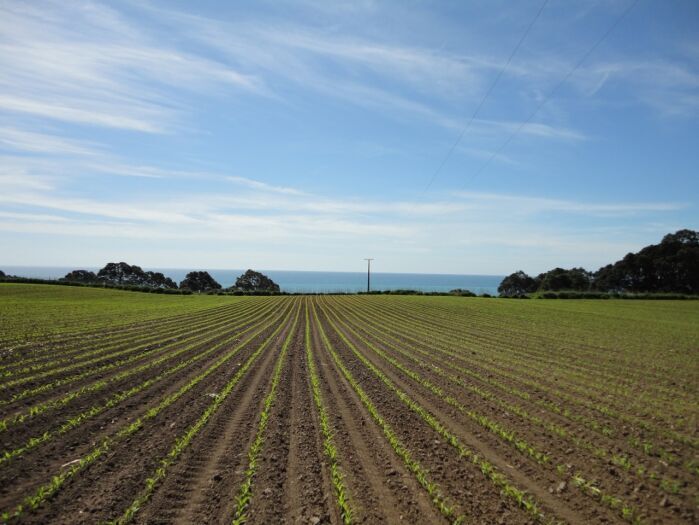
Articles
Management strategies for planting maize seed into cold soil

Planting date is one of the most important factor in establishing a good maize stand and consequently, yield. With the maize planting season drawing near, there is always the excitement to get out and get started. Before deciding on the optimum planting date, several factors will have to be considered because the ideal date will vary by season or location. The key attributes to consider include soil type, soil temperature, soil moisture and amount of surface residue.
Planting should only commence if 9.00am soil temperatures within the top 5cm are warmer than 10oC for at least a week. Cool soil temperatures can cause seed membranes to rupture, providing an entry and food source for soil borne pathogens. Planting into cold and/or wet soils could hence result in reduced plant stands, decreasing potential yields.
For germination to occur, maize seed needs to absorb moisture and research shows that maize seeds absorb the most water within the first 30 minutes of exposure to saturated conditions. If seed absorbs cold water within the first few hours of planting, the germ of the seed can be damaged. This reduces metabolism and vigour and increases sensitivity to herbicides and other chemicals. Ideally, aim to plant when there are greater chances of the paddock experiencing at least 48 hours of warm moist conditions after planting.
If there is a forecast for bad weather ahead it is best to delay planting until the bad spell has passed. Planting into damp, cold soils, or just before a bad weather event, could potentially be damaging to a successful maize crop establishment because injury can still occur if cold, wet conditions occur immediately after planting.
Soil type will impact planting time largely because sandy soils are usually much more forgiving than heavy soils because they are normally free draining and tend to dry out faster. Temperature fluctuations for sands tend to be greater, particularly on clear nights with cold air temperatures, which is why it is important to check soil temperatures prior to planting.
The amount of surface residue in the paddock will also influence the ideal planting time. Dense residue will encourage soils to hold moisture longer and cushions the soil from direct heat from the sun, resulting in lower soil temperatures. This could promote seedling diseases particularly in poorly drained paddocks.
Crop residues can also potentially lock up soil nitrogen. Where high levels of residue exist, consider using residue clearers on the planter to remove residue from seed furrows allowing quicker and more uniform emergence. Residue management post-harvest is key for setting up your next season’s crop.
Plant emergence is driven by the total heat accumulation and in cooler conditions, typical for early planting, plants take longer to emerge and become susceptible to pest pressure. In these conditions aim to plant 5% higher than desired seeding rates to allow for greater attrition rate due to the cold conditions and pest pressure.
When planting early into slightly cooler soils, selecting hybrids with strong early growth traits will help. Great early vigour means plants will grow quicker, reducing the risk of environmental pressures, as well as pests and weeds.
For planning purposes, rather than focussing on a specific planting date, growers should consider a planting window, which consists of a range of dates required for establishing and growing a high yielding crop. This will allow for flexibility in case of seasonal variation or non typical weather forecasts and conditions. Having a secondary plan when selecting your hybrid or maturity also allows you to be more flexible if your plan requires changing due to conditions.
The best way to approach your planting this season is to have a date range (window) that allows flexibility to plant to the conditions. Monitor soil moisture, temperature, residue levels and weather forecasts is key. The best yields are achieved when soil temperatures are consistently at or above the minimum for germination and growth. Choosing the right Pioneer hybrid along with these other considerations is the starting point to achieve a high yielding crop.
